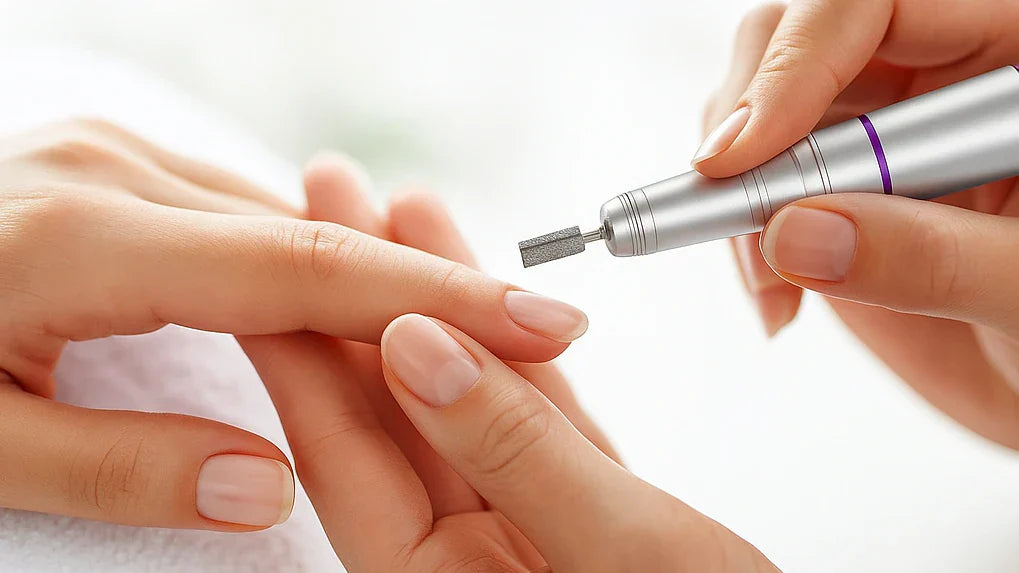
🧰 What speed should I choose for a nail sander?
Share
The rotation speed of the drill bit during an electric manicure is a determining factor in ensuring a quality result, client comfort, and procedure safety. Proper use of the drill bit helps prevent skin injuries and optimizes working time.
🔧 Factors influencing the choice of speed
To determine the appropriate speed, several elements must be taken into account:
- Cuticle type : normal, overgrown or wet.
- Cuticle pocket depth : space between the cuticle and the pterygium.
- Nail thickness : natural or artificial.
- Type of cutter used : ceramic, diamond, tungsten, etc.
| Cuticle type | Recommended speed | Remarks |
|---|---|---|
| Normal | 8,000 to 12,000 rpm | Suitable for most manicures. |
| Overloaded | 15,000 to 17,000 rpm | Requires prior preparation to detach the cuticle. |
| Humid | 8,000 to 10,000 rpm | Sensitive, requires special attention. |
⚙️ Practical tips for optimal use
- Start at a low speed : For regular clients, adjust the speed based on their cuticle type. For new clients, start at a lower speed to gauge their skin's reaction.
- Use appropriate burrs : Ceramic or diamond burrs are recommended for their smoothness and efficiency.
- Apply minimal pressure : Excessive pressure can lead to overheating and injury.
- Maintain strict hygiene : Clean strawberries regularly to prevent the accumulation of dust and bacteria.
- Monitor the temperature : If the cutter gets too hot, stop and let it cool to avoid burns.
📌 In summary
Choosing the right speed for your nail file depends on the type of cuticle, the depth of the pocket, and the thickness of the nail. Adjusting the speed accordingly is essential to ensure a quality, safe, and comfortable manicure for the client.
Would you like recommendations on specific bits to use for each cuticle type or tips on maintaining your nail drill?
